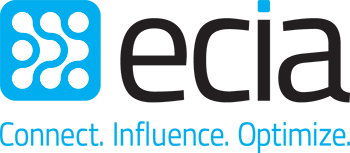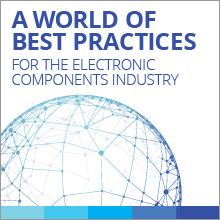The Standards ProcessA standard begins as a technical contribution which is supported by a number of interested parties to the extent that they indicate their willingness to participate in the document's development. ECIA develops standards under the trademark EIA Standards to maintain continuity with the long-recognized brand from the past Electronic Industries Association (EIA). A Project Initiation Notice (PIN) form is completed and submitted for approval to the ECIA Standards Department. After the project is approved for initiation, the Engineering Committees and their Subcommittees work to further develop the technical parameters of the project. When the proposed standard or technical document is ready to be shared with the entire group, the formulating Engineering Committee circulates the draft of the document on a ballot called a "Committee Ballot." The purpose of this ballot is to identify any unresolved issues and to establish consensus within the formulating group. Every effort is made to address and resolve comments received. During this phase of the standards-making process, the draft of the document is not released to the general public. If the document is intended to be an American National Standard, the Committee Ballot is also intended to approve submission of the project as an EIA Standards Proposal. The document is made available for sale by our publications distributor; IHS Markit and the American National Standards Institute (ANSI) notifies the industry at large that they can comment via its publication ANSI Standards Action. Once all comments have been addressed, the document is forwarded with all its balloting information to the EIA Standards and Technology Department for procedural and legal review. If the document is intended to be an American National Standard, the same information is forwarded to the ANSI Board of Standards Review (BSR) with a request for approval to receive the designation of an American National Standard and to be published as such. The balloting information is reviewed and supporting documents including minutes of meetings are checked to see if due process and other requirements have been followed. After this review and upon approval of the BSR, the document is approved for publication as an EIA Standard with recognition as an American National Standard. A standard which is an American National Standard must be reviewed every five years to ensure it remains current. During this five-year period, a standard may be reaffirmed, revised, withdrawn, or stabilized. Reaffirmation of a published standard goes through the same process as developing a new standard, with no technical or substantive changes allowed. When approved, the document then carries the more recent date on the cover indicating that it is still current. Revision of a standard permits changes both editorial and technical to the content in the same process as for developing a new standard. A standard may be formally withdrawn if the committee agrees to pull it off the market for any reason. Some documents may exist for many years and become referenced in numerous other standards, regulations, etc. In some cases, a committee over time may lack present expertise in that specific subject content of a standard or a new technology has surpassed and essentially replaced the older technology. The committee may then decide that the document is still valid for industry but the committee will no longer place the document through the periodic reaffirmation process. The document would then be stabilized by the committee and carry that designation on the cover. In the United States, ANSI is the accrediting body for industry standards. The ECIA standards developing process has been accredited by ANSI for over three decades and carries the well-established EIA Standard brand. The document ANSI Essential Requirements: Due process requirements for American National Standards describes in detail the elements required to become an accredited organization. In addition to the domestically-developed standards, ECIA is also administrator to 13 US Technical Advisory Groups (TAGs). These bodies represent the US in the development of international standards for electrical, electronic and related industries by the International Electrotechnical Commission (IEC) based out of Geneva, Switzerland. The IEC has over 20,000 participants from 86 countries developing standards in 205 Technical Committees and Subcommittees. These participants are from industry, commerce, government, test and research labs, academia, and consumer groups.
ECIA Document Improvement Form and Appeals Process All appeals related to EIA standard, bulletin or publication development are initially directed to the EIA S&T Dept staff. The provision for appeals is important for the protection of all parties involved within the EIA Standards development process. An appeals mechanism safeguards both those who are directly and or materially affected by the process and the Standards Developing Organization. The appeals procedures is further detailed in EP-20-D Manual of Standards and Technology Organization and Procedure (updated 02-2021). A $1200 filing fee applies. For other than involved parties, those requesting materials relating to a specific appeal will be assessed a fee to cover staff costs and materials related to providing the documents. In addition, if in the review or use of this document, a potential change should be considered for safety, health or technical reasons, the ECIA Document Improvement Proposal should be submitted to the EIA Standards & Technology Department for review. |


